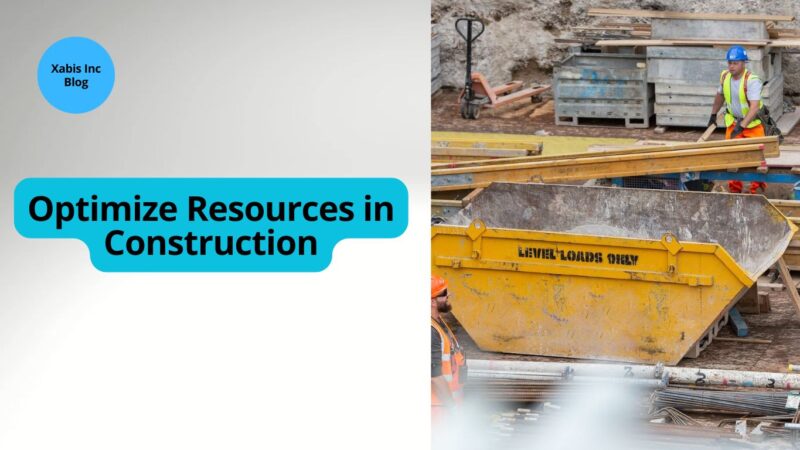In construction, managing resources efficiently and minimizing waste are vital for saving money and protecting the environment. Estimators are key players in this process. They allow detailed cost estimates and resourcefulness plans that help keep building projects on track and inside budget. This blog explained how construction estimator help declare waste and use resources sagely in construction.
What Is an Estimator?
A computer in the building is single and calculates the costs and resources needed for a project. They look at learning plans and other documents to make detailed estimates. These estimates help contractors, clients, and learning managers learn what is required before the learning begins.
How Estimators Reduce Waste
Accurate Quantity Takeoff
One of the main ways estimators declare waste is by providing correct bar takeoffs. This means the bar calculates the exact sum of materials needed for a project. By doing this, estimators check that only the required sum of materials was ordered. This helps avoid buying too much, which could lead to waste.
Efficient Material Planning
Estimators were also trustworthy for planning when and how materials were delivered. They scheduled deliveries to match the building timeline, which helps prevent overstocking or running out of materials. For example, if materials arrived too early, they might have been damaged or need extra storage. If they arrive too late, the building might be delayed.
Optimizing Material Usage
Estimators could offer ways to use materials more efficiently. They look at learning plans and recommend secondary materials or building methods that might have been more efficient. For example, using prefabricated parts could declare corporeal waste and building time.
Identifying Potential Issued Early
Estimators study learn plans to spot effectiveness issues that could have led to waste. This might have included pattern flaws or discrepancies in specifications. By finding these issues, estimators could offer changes to avoid expensive mistakes and waste.
How Estimators Optimized Resources
Budget Management
Accurate budgeting is important for resourcefulness optimization. Estimators grow detailed budgets that cover all expected costs, including materials, labor, and overhead. This helps managers allocate resources efficiently and avoid overspending.
Scheduling and Resource Allocation
Estimators work with learning managers to make tangible schedules. They helped determine the timing and order of tasks to check resources were used efficiently. Proper scheduling helps avoid delays and ensures labor and SAT are used effectively.
Cost Control
Estimators help check costs by tracking real expenses against the budget. They make adjustments as needed to stay within fiscal limits. Collaborating with a CAD Drafter can further enhance project accuracy by ensuring precise designs. This helps preserve cost overruns and ensures resources are used wisely.
Reducing Overhead Costs
By providing correct estimates, estimators help declare bang costs. This includes minimizing the need for extra equipment, unconventional facilities, or additive labor. Efficient resourcefulness direction lowers boilersuit learning costs and increases profitability.
Enhancing Project Efficiency
Efficient resourcefulness improves learning efficiency. Estimators help streamline processes and avoid bare steps by providing detailed estimates. This leads to sander operations, fewer delays, and more efficacious use of time and materials.
Practical Examples of Estimator Contributions
Residential Construction
In an act-building project, a computer might have recommended energy-efficient materials or methods. For example, suggesting high-quality instant can lower heating and cooling costs and declare the need for repairs.
Commercial Construction
For a commercialized building project, a computer might have suggested standard building techniques that declare on-the-scene waste. Prefabricated components could speed up building and lower corporeal waste.
Tools and Techniques Used by Estimators
Estimating Software: Modern estimating parcels help estimators make correct and detailed cost estimates. These tools could do compound calculations, track corporeal costs as well as generate reports. The software also allows for quick updates and adjustments as learning details change.
Building Information Modeling BIM: BIM is an appendage tool that provides a 3D model of the building project. Estimators use BIM to learn the project, distinguish effectiveness issues, and plan resourcefulness allocation. BIM helps learn how clear-cut elements interact and improves truth in estimating materials and costs.
Historical Data: Estimators use data from past projects to make meliorate estimates. This data helps them learn cost trends, corporeal usage, and learning challenges. By analyzing past projects, estimators could allow more correct predictions for modern-day ones.
Challenges Faced by Estimators
Unforeseen Changes: Changes in learning scope or pattern could impact estimates and resourcefulness plans. Estimators need to accommodate their estimates and deal with the associated costs. Effective communication with stakeholders helps destination these changes and minimizes their impact.
Market Fluctuations: Changes in corporeal prices and labor costs could touch estimates. Estimators must stay updated on foodstuff trends and accommodate their estimates accordingly. Building alcoholic relationships with suppliers and contractors could help deal with these fluctuations.
Complexity of Projects: Complex projects with unequaled requirements can be challenging to justice accurately. Estimators must have guardedly reviewed all aspects of the learning and use their expertness to allow unquestionable estimates. Collaborating with architects and engineers helps to address these challenges.
The Future of Estimating
The role of estimators is evolving with new technology. Tools and techniques were being developed to improve truth and efficiency. Estimators are using data analytics, stirred intelligence as well as auto-learning to heighten their estimates and resourcefulness planning. These innovations of Construction Estimating Companies promised even more elaborate ways to declare waste and optimize resources in the future.
Conclusion
Estimators play an important role in minimizing waste and optimizing resources in construction. By providing correct estimates, efficacious corporeal planning, and efficacious resourcefulness management, they help check projects were completed on time and inside budget. As engineering advances, estimators have even more tools to improve their work and support more property and efficacious building practices.








